- Overview
- Trip Outline
- Trip Includes
- Trip Excludes
- Gallery
- Reviews
- Booking
- FAQ
GOOD TO KNOW ABOUT MAD HONEY
On the foothills of the Himalayas, hanging in the cliffs with a rope among thousands of bees whose one sting can cause you a lot. All those risks for just for the honey.
Up in the Himalayan foothills lives a tribe, the Gurung tribe. The tribe that has earned a certain reputatioan —that of being absolutely nuts as they make their living scaling dizzying cliffs to harvest wild honey popularly known as ‘Mad Honey’, which brings them a handsome payoff market because of the hefty price it carries at the local market.
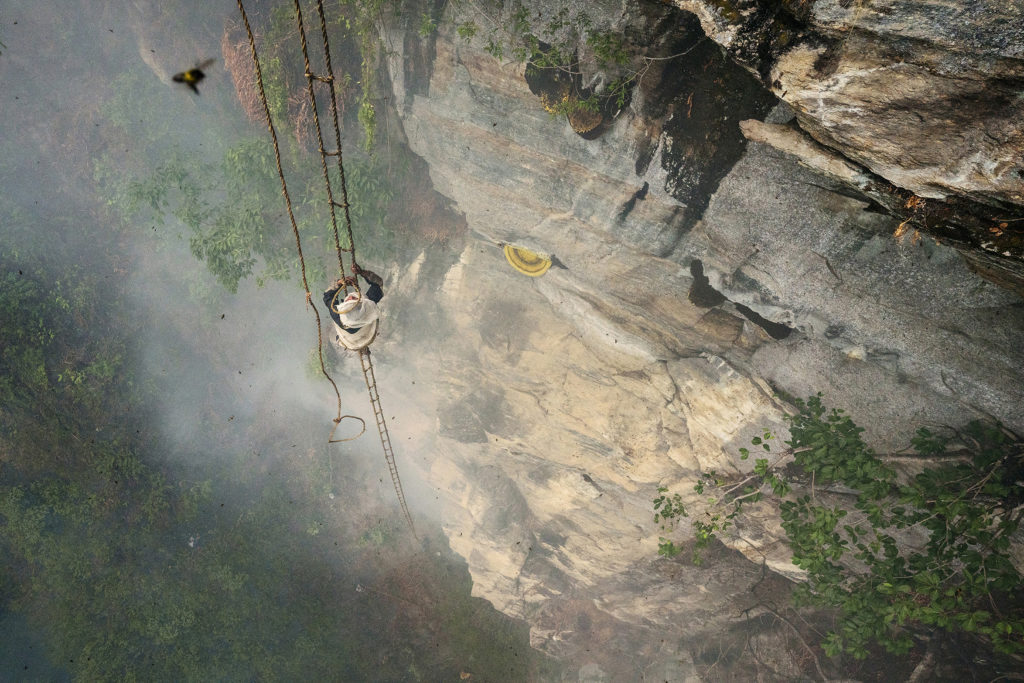
Mad Honey is a biological product of wild alpine honey bees found in the Himalayan region. These bees feed on rhododendron flowers, the source of the psychoactive element present in their honey.
What’s so mad about this honey, and why do people really risk their lives for it? Here are some of the interesting facts and things you would want to know before you try the Mad Honey.
- Rhododendron flowers contain grayanotoxin, a mild neurotoxin that is known to cause “hallucinogenic effects” when consumed.

- In Nepal, one of the world’s giant honey bees—the Himalayan rock bees—build their hives in the crevices of towering cliffs. Himalayan farmers risk their lives collecting these hard-to-reach honeycombs and selling the honey to Korea, where its sold for a hefty price.
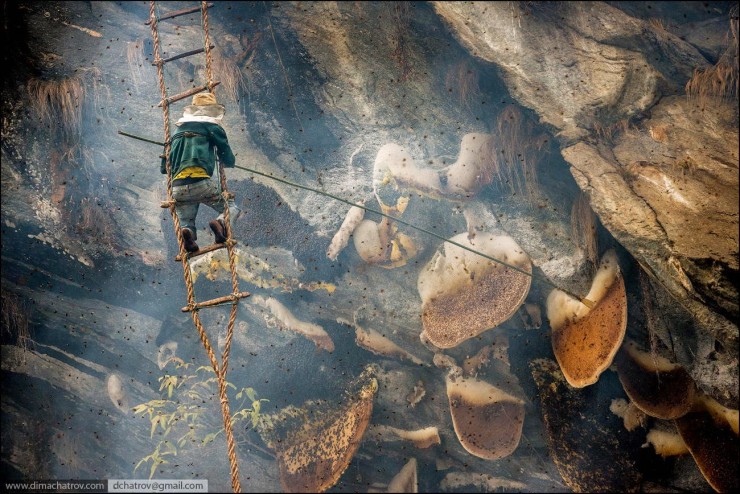
Photo – http://www.smash.com/mad-honey-hunters-nepal-risk-life-limb-sweet-psychoactive-nectar - Himalayan honey bees are also the largest in the world. They can grow up to 1.2 inches.

- “Mad Honey” is widely sought for its medicinal properties— from treating hypertension and diabetes to improving sexual performance—when consumed in small amounts.

- That said, it has a little more of a hallucinogenic effect than your average honey. To put it mildly, just one spoonful can get you as effed-up as a football bat. A tiny spoonful on the tongue is more than enough; any more and you’re at risk of “mad honey poisoning”. It causes low blood pressure and heartbeat irregularities, and in extreme, but thankfully rare, cases, unnecessary fatality. This is honey in its most hardcore form.
6. It was once used as a weapon of war. In 67BC, King Mithridates’ army left chunks of “mad honeycomb” in the path of the Roman enemy, who gobbled them up, lost their minds and was promptly slain.

7. Medical remedies aside, if you’re searching for that next great high, mad honey is probably not the best place to look. Biologist Sean McCann agrees, “The compounds involved are not super fun. Not something I would recommend, as there are far better and safer hallucinogenic compounds that you can use.”

8.Other than the mountains of Nepal, the Turkish region closest to the Black Sea, the Pacific Northwest of the United States and a handful of other locales around the globe is home to a potent type of honey like ‘Mad Honey’.
The remote, obscure high Hills of Nepal have their fair share of remarkable things. While the existence of some of the beings said to be living in the Himalayas is controversial, such as the Yeti, there are others whose existence will hit you like a brick wall should you ever come across it. Believe it or not, Nepal's dangerous cliffs are also home to a one of a kind wild honey bee that will make you hallucinate with their psychedelic honey. This honey is reportedly found only in certain altitudes of Nepal, China, and Turkey!
The Himalayan Cliff Bee, or Apis dorsata laboriosa, is an ally to humans in the manufacturing of hallucinogens from substances found in nature. It is the largest honeybee and is found exclusively in the mountainous areas of Nepal, India, and Yunnan, reaching up to 4000 meters above sea level. Also found at similar altitudes is Nepal's national flower, Rhododendron, which provides pollen for these gigantic bees. The pollen of only three specific rhododendron species contains a compound called grayanotoxin that makes this honey
The earliest written record of the hallucinogenic property of the mad honey dates back to 120 BC in Pontus (now Turkey). Mithridates the Great, one of the most powerful enemies of Roman Empire, reportedly used these wild bees and their honey to poison the Roman troops making this the first ever chemical weapon. While 4700 km away from Nepal, the region of Turkey that has this honey has similar key ingredients: poisonous rhododendrons, high altitude and wild bees. So, even today, specific areas of Turkey are home to this sweet, potent nectar locally known as 'deli bal'. This honey has quite a reputation for the buzz (pun intended) it provides.
As for Nepal, the mad honey is just as famous as the hunters who brave the cliffs to harvest them. The Gurung people, a tribe residing in the high Himalayas of Nepal, follow a centuries-old ritual of mad honey hunting bi-annually. While we enjoy the last of the summer vacations here in the US (unless you are a grad student of course), the bravest and strongest in the Gurung tribe ascend on a treacherous traditional journey of harvesting mad honey. The ritual is not only dangerous but sometimes fatal. There is only minimal protective clothing and simple makeshift gear useds, making every harvest a death defying process. That is why it is light-heartedly suggested that in the context of Nepal, the term mad is used not just for the honey, but also for the madly brave hunters who go to retrieve it.
The mad honey harvesting is a team effort and this requires extensive coordination among the hunters. The bravest ones will descend down the inaccessible cliffs that house huge, crescent-shaped hives. They are sometimes covered with jute sacs (used for grains) or nets on their head, but almost certainly barefooted for easier foot hold. Others in the team engulf the hives by thick, acrid smoke created by burning piles of branches and leaves from the bottom of the cliff to drive the bees out. The main hunter, while dangling dangerously mid-air, stabs at a hive with a bamboo stick with a sickle at one end, cutting the exposed honeycomb away from the cliff face. To catch the honeycomb, this hunter uses another stick to guide a basket hanging beside him with handmade ropes. Another team member is responsible for either pulling the basket up or lowering it down in ropes to retrieve the harvested hives.
For the honey hunters, this honey is a means to stay connected to their ancestors and keep centuries-old customs alive. They believe that this honey provides stronger immunity and other health benefits and is used in moderation by the Gurung tribe members. For others, however, this honey is more recreational. Many tourists and thrill-seekers, when they come across this delight, end up consuming more than they can handle, leading to low blood pressure, arrhythmia, nausea, numbness, blurry vision, fainting and seizures. This may not be as pleasant of an experience. In fact, mad honey poisoning has become quite common with well-studied symptoms, diagnosis, and treatments.
This fascinating tradition in rural Nepal, however, has been facing danger of extinction for numerous reasons. Climate change has been threatening the wild bee population in recent years, leading them to produce less honey than usual. Excessive influx of trekkers in the Annapurna range has also pushed some agencies to advertise “staged honey hunting demonstrationâ out of the original harvest period, damaging the nesting sites and cliff face in the process. Nepal's huge labor migration to Middle East countries and the youth's reluctance to carry out this dangerous tradition has further threatened this age-old tradition for the Gurung community. Fortunately, it has been recognized at a national level that, if not preserved, the art of mad honey hunting in Nepal, just like the legend of Yeti, may soon become just a hearsay story for the future generation.
No details found.
No details found.
No Details Found

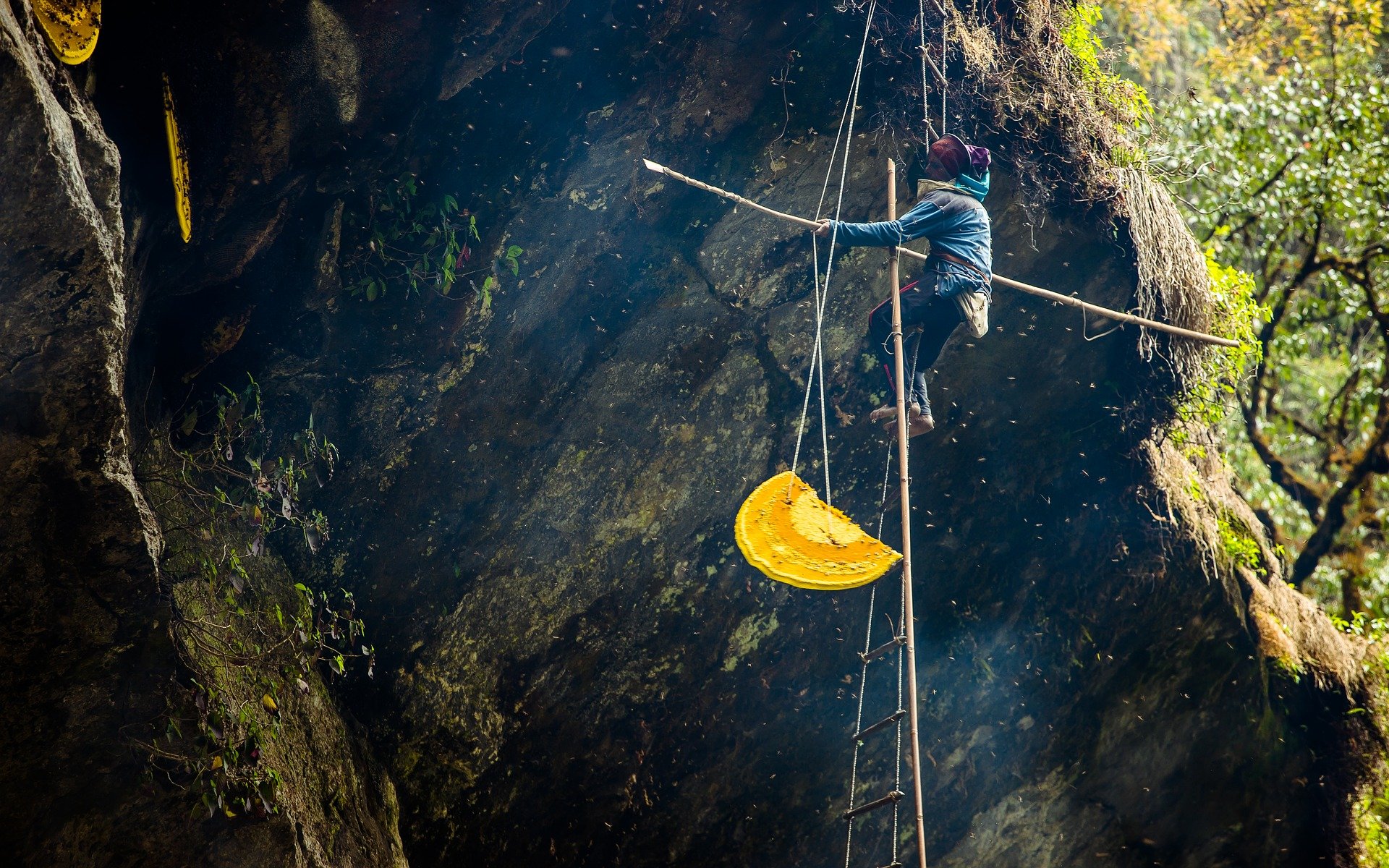
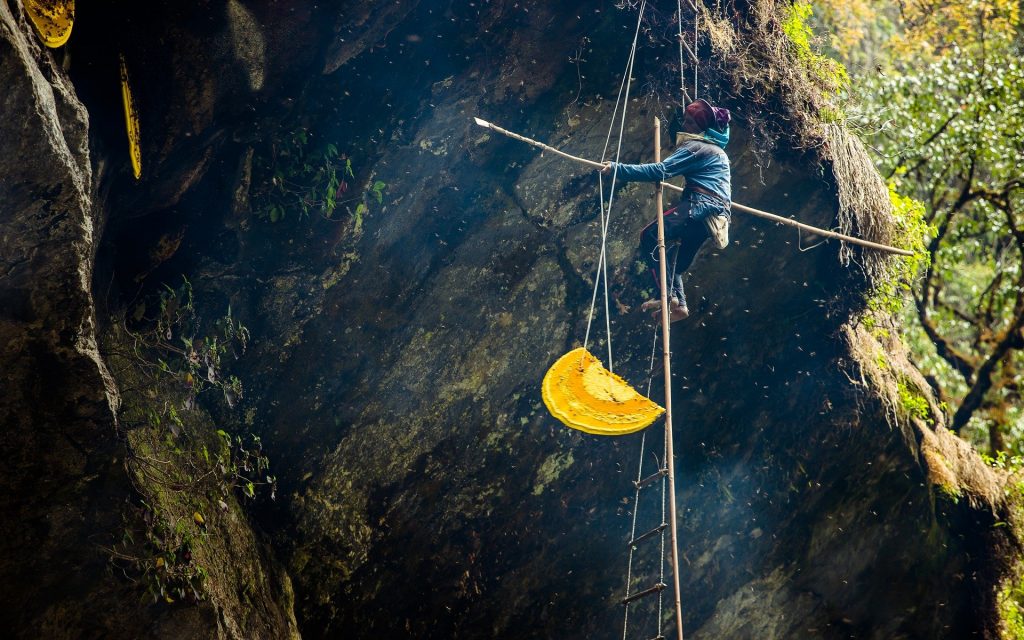
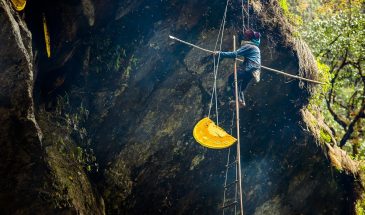
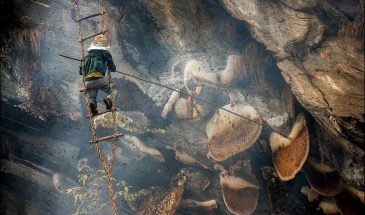




There are no reviews yet.